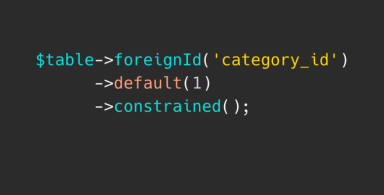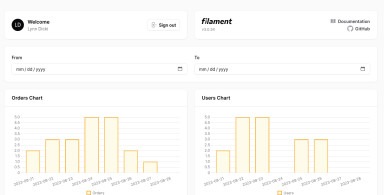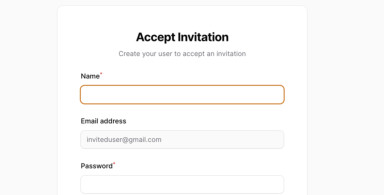Today I want to talk about a feature of Laravel which is really useful but can be potentially difficult to understand at first. Pivot table is an example of intermediate table with relationships between two other "main" tables.
Real-life example of pivot tables
In official documentation they show the example of User-Role relationships, where user potentially can belong to several roles, and vice versa. So to make things clearer - let's take another real-life example: Shops and Products. Let's say a company has a dozen of Shops all over city/country and a variety of products, and they want to store the information about which Product is sold in which Shop. It's a perfect example of many-to-many relationship: one product can belong to several shops, and one shop can have multiple products.So here's a potential database structure:
shops- - id
- - name
- - id
- - name
- - product_id
- - shop_id
- Name of the pivot table should consist of singular names of both tables, separated by undescore symbol and these names should be arranged in alphabetical order, so we have to have product_shop, not shop_product.
- To create a pivot table we can create a simple migration with artisan make:migration or use Jeffrey Way's package Laravel 5 Generators Extended where we have a command artisan make:migration:pivot.
- Pivot table fields: by default, there should be only two fields - foreign key to each of the tables, in our case product_id and shop_id. You can add more fields if you want, then you need to add them to relationship assignment - we will discuss that later.
Models for Many-to-Many Relationships: BelongsToMany
Ok, we have DB tables and migrations, now let's create models for them. The main part here is to assign a many-to-many relationship - it can be done from either of "main" tables models. So, option 1: app/Models/Shop.php:class Shop extends Model
{
/**
* The products that belong to the shop.
*/
public function products()
{
return $this->belongsToMany(Product::class);
}
}
Or option 2:
app/Models/Product.php:
class Product extends Model
{
/**
* The shops that belong to the product.
*/
public function shops()
{
return $this->belongsToMany(Shop::class);
}
}
Actually, you can do both - it depends on how will you actuall use the relationship in other parts of the code: will you need $shop->products or more likely to query $product->shops, or both.
Now, with such declaration of relationships Laravel "assumes" that pivot table name obeys the rules and is product_shop. But, if it's actually different (for example, it's plural), you can provide it as a second parameter:
public function products()
{
return $this->belongsToMany(Product::class, 'products_shops');
}
Moreover, you can specify the actual field names of that pivot table, if they are different than default product_id and shop_id. Then just add two more parameters - first, the current model field, and then the field of the model being joined:
public function products()
{
return $this->belongsToMany(Product::class, 'products_shops',
'shops_id', 'products_id');
}
One of the main benefits here: you don't need to create a separate model for ProductShop - you will be able to manage that table through pivot commands, we will discuss that right away.
Managing Many-to-Many Relationships: attach-detach-sync
So, we have tables, and we have Models ready. Now, how do we actually save the data with a help of our two Models instead of the third intermediate one? Couple of things here. For example, if we want to add another product to the current shop instance, we use relationship function and then method attach():$shop = Shop::find($shop_id); $shop->products()->attach($product_id);The result - a new row will be added to product_shop table, with $product_id and $shop_id values. Likewise, we can detach a relationship - let's say, we want to remove a product from the shop:
$shop->products()->detach($product_id);Or, more brutally, remove all products from a particular shop - then just call method without parameters:
$shop->products()->detach();You can also attach and detach rows, passing array of values as parameters:
$shop->products()->attach([123, 456, 789]); $shop->products()->detach([321, 654, 987]);And another REALLY useful function, in my experience, is updating the whole pivot table. Really often example - in your admin area there are checkboxes for shops for a particular product, and on Update operation you actually have to check all shops, delete those which are not in new checkbox array, and then add/update existing ones. Pain in the neck. Not anymore - there's a method called sync() which accept new values as parameters array, and then takes care of all that "dirty work" of syncing:
$product->shops()->sync([1, 2, 3]);Result - no matter what values were in product_shop table before, after this call there will be only three rows with shop_id equals 1, 2, or 3.
Additional Columns in Pivot Tables
As I mentioned above, it's pretty likely that you would want more fields in that pivot tables. In our example it would make sense to save the amount of products, price in that particular shop and timestamps. We can add the fields through migration files, as usual, but for proper usage in relationships we have to make some additional changes to Models:public function products()
{
return $this->belongsToMany(Product::class)
->withPivot('products_amount', 'price')
->withTimestamps();
}
As you can see, we can add timestamps with a simple method withTimestamps and additional fields are added just as parameters in method withPivot.
Now, what it gives us is possibility to get those values in our loops in the code. With a property called pivot:
foreach ($shop->products as $product)
{
echo $product->pivot->price;
}
Basically, ->pivot represents that intermediate pivot table, and with this we can access any of our described fields, like created_at, for example.
Now, how to add those values when calling attach()? The method accept another parameter as array, so you can specify all additional fields there:
$shop->products()->attach(1, ['products_amount' => 100, 'price' => 49.99]);
-front_grid.jpg)

;-(5)-front_grid.jpg)


-front_grid.jpg)
Hi, Povilas, Any plans to update "Eloquent Relationships: The Ultimate Guide" on @QuickAdmin or Premium Tutorials in text version on @DailyLaravel? I tend to get stuck on Eloquent Relationships! I tweeted it as well if you missed that one. 😀
Replied on Twitter :)
Great tutorial - I love the Generators package! One question - as the pivot table doesn't require a seperate model for the intermediate table, how would we use a factory to populate this with data?
e.g I have three tables
courses,students&course_student.Course&Studenthas a model so e.g I can useStudent::factory(100)->create();in my DatabaseSeeder class to create 100 rows in the students table, however I would like to be able to use a factory to populate data in thecourse_studentpivot table, is this possible using factories or should I just populate the data manually?Used this method to do some form of populating data in case it helps anyone else https://laravel.com/docs/9.x/eloquent-relationships#one-to-one
Yes, it is possible in factories, something like
Course::factory(10)->create()->each(function(Course $course) { $course->students()->attach(1); });brilliant very simple and efficient thanks Povilas
Is it necessary to create a model file for pivot tables?
Thanks for this article its very clear.